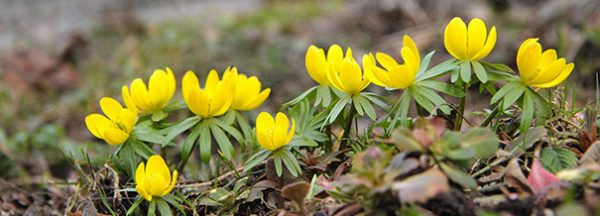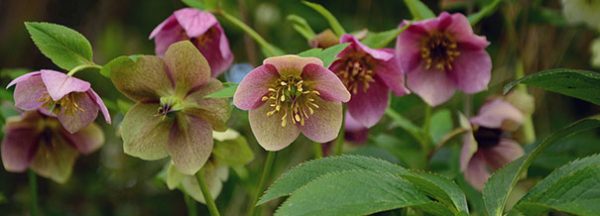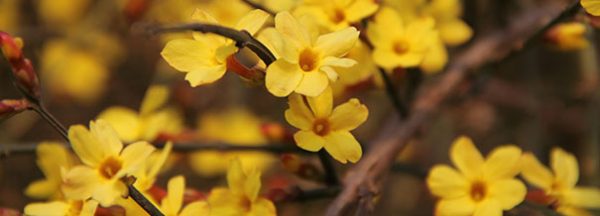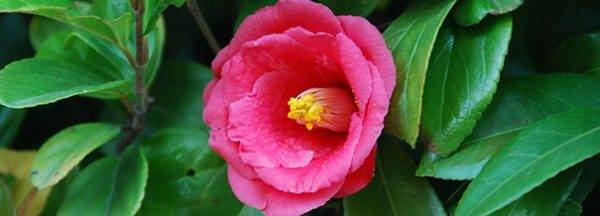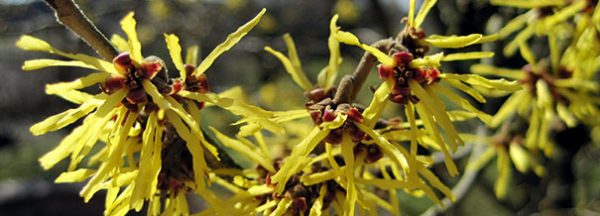
Winter in the Mid-Atlantic region does not mean your garden has to be lifeless — full of dull greens and browns. Aside from the fabulous bark textures and conifers you can add to your landscape, here are some plants that flower in winter!
Winter Aconite
Winter Aconite (Eranthis) is a small bulb in bloom now in area gardens. It is in the buttercup family, and the little yellow flowers are a delight to see on cold, windy days. They tolerate frost and ice well – looking good even in the worst conditions. Plant them under deciduous trees and in woodland type settings. They are ephemeral, so they will disappear as other early spring plants are filling in. You can buy bulbs to plant in the fall, If you want to propagate them, wait until the foliage starts to die back, then dig up the tubers, divide and re-plant them.
Christmas Rose/Lenton Rose
Christmas Rose/Lenten Rose (Hellebore Orientalis) blooms in late winter/early spring. New introductions include flowers with double-petals and variegated foliage. Flowers are commonly white but can come in shades of pink from pale to almost black.
It is a robust plant that is drought-tolerant, thrives in the shade, and is deer-resistant. The foliage is evergreen, but in late spring may look a bit tattered, so feel free to cut it back. If happy in a spot, it will soon form a beautiful colony to become a virtual ground cover.
Winter Jasmine
Winter Jasmine (Jasminum nudiflorum) is in bloom now across the DC region. You will see them in the large concrete containers that line the National Mall. It is often mistaken for Forsythia, but there are several differences. First, stems are squarish, flexible, and deep green (versus round, brittle, and brown). Second, the blooms are a lighter yellow and in flower in early Winter. The plant itself is classified as a deciduous perennial, though most consider it a shrub, and it can be treated as a vine as well. It thrives in a variety of growing situations from full to part sun, from wet to dry soils. Try a Winter Jasmine trained on an arbor or spilling over a retaining wall. If planted in the ground, it can sucker and spread. Pull and contain any suckers that emerge.
Winter-Blooming Camellia
Camellias are large, attractive, broad-leaved evergreens that maintain popularity for their flowers, which bloom from winter to spring. There are more than 2,300 named, registered cultivars ensuring you have an excellent selection for your specific needs. Most camellias grow to a height of 6 – 12 feet with a spread of around 6 – 10 feet. Use them as large specimen shrubs, screens, or along borders. With the right planning, you can have a variety of different camellias providing color in your yard from December into June.
Witch Hazel
Witch hazel is one of the first bloomers you’ll notice in your garden in the months leading into spring. They are large, deciduous shrubs whose flowers are colorful and fragrant. As a landscape plant, witch hazel is a low-maintenance shrub that is resistant to most common pests and diseases. They prefer full sun but are known to tolerate filtered shade in warmer regions. Most witch hazel can grow to a height of 10 – 20 feet.
Other winter-blooming plants to consider for your garden are Heaths/Heathers, Primroses, Edgeworthia, Snowdrops, and early varieties of Daffodils and Crocus.


